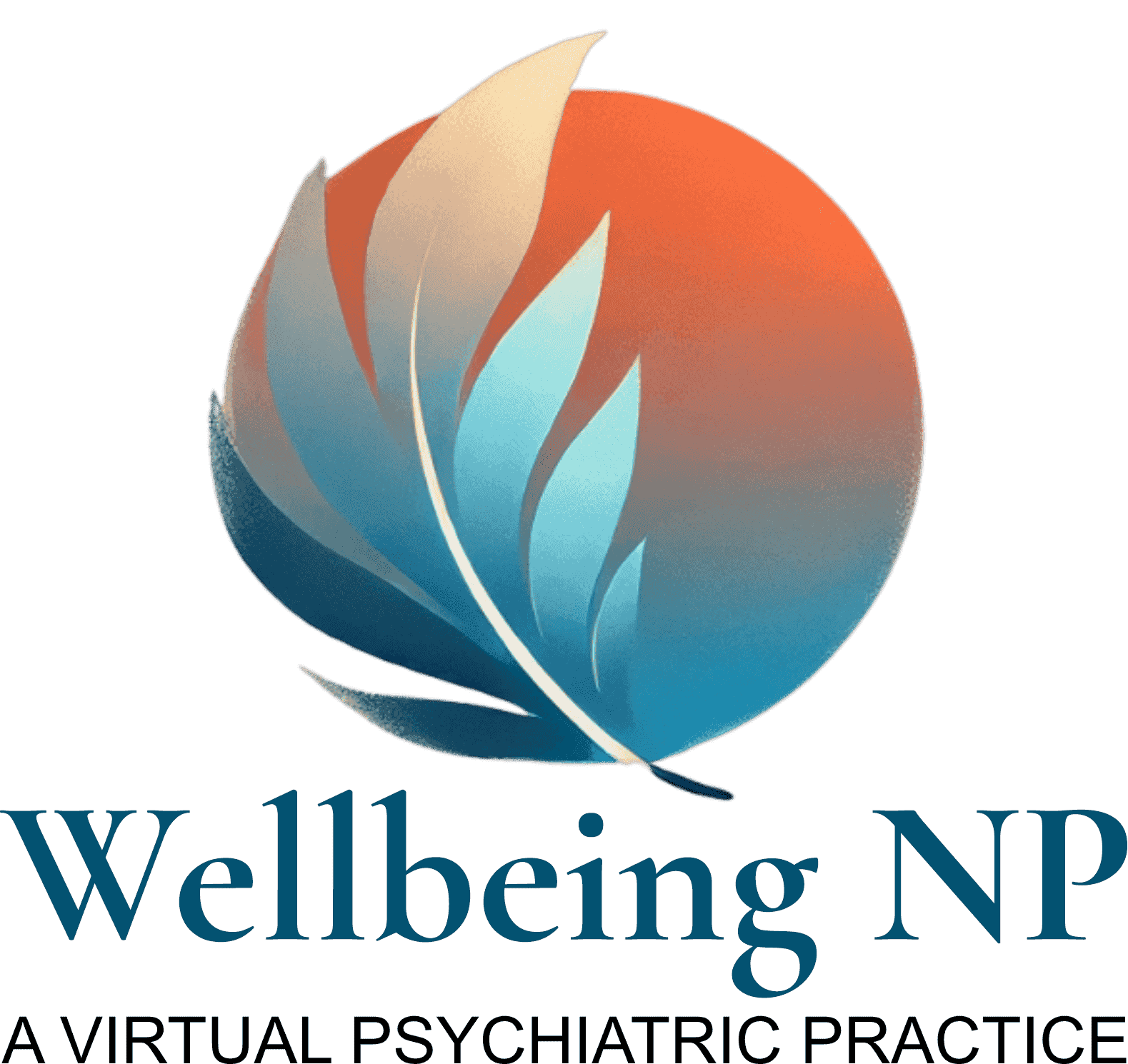
A Response to the NYT’s Take on ADHD, Medication & the Myth of Maturity
By Lindsay Fuson, FNP-C, PMHNP-BC | Wellbeing NP
A recent New York Times Magazine article titled “Revisiting ADHD: What We’ve Learned—and Unlearned—About Stimulant Treatment” revisits a provocative idea:
Maybe ADHD isn’t a lifelong disorder. Maybe it fades when adults find jobs, relationships, or routines that finally “work.”
That idea might feel comforting. But from the perspective of someone who lives with ADHD, treats ADHD, and helps other high-functioning adults manage it every day — I want to gently, but clearly, offer a different frame:
ADHD doesn’t vanish. But its burden lightens when you stop trying to function in environments that don’t support how your brain works.
What the Article Gets Right
Let’s give credit where it’s due — the article brings up some valuable and long-overdue insights about ADHD:
- The over-reliance on stimulant medication to “fix” behavior
- The lack of a clear, consistent biological marker for ADHD
- The contextual nature of symptoms, which fluctuate based on environment
- The fact that ADHD often reflects environmental mismatch, not just personal deficit
These are real, important conversations. But here’s what needs clarifying:
It’s not that ADHD disappears — it’s that the person finally stops fighting their own neurology.
“Growing Out of ADHD” Is a Misleading Frame
Let’s look at the data:
- ADHD persists into adulthood in about 65% of cases, according to meta-analyses of long-term studies
- Adults with ADHD are 60% more likely to be fired and 3x more likely to job-hop
- Only 1 in 10 adults with ADHD are formally diagnosed
- Over 50% also struggle with anxiety or depression — often after years of internalizing failure
Those numbers don’t suggest spontaneous recovery. They tell a story of misdiagnosis, misalignment, and delayed support.
A Patient Once Said to Me…
“I thought I was just lazy or broken… until I realized I’d spent 20 years trying to fit into jobs that didn’t fit me.”
That’s not unusual. That’s the norm.
When patients come to me in their 30s or 40s, it’s rarely because life is falling apart. It’s because they’ve done everything “right” — the career, the marriage, the degree — and still feel like they’re sprinting just to keep up.
Why ADHD Leads to Chronic Career Misfit
Here’s the uncomfortable truth:
ADHD not only struggles in the wrong environment — it also makes it harder to find the right one.
- Executive dysfunction makes finishing school, training, or licensing harder
- Task switching, detail fatigue, and time blindness sabotage traditional workflows
- Emotional dysregulation leads to burnout, conflict, or impulsive exits
- Late diagnosis means adults spend decades without tools, language, or clarity
- Masking leads to impressive resumes that hide a lifetime of chronic exhaustion
So no — your ADHD didn’t disappear. Your desperation did, when you finally stopped trying to live on hard mode.
The Brain Doesn’t “Outgrow” ADHD — But It Can Rewire
Neuroplasticity is real. And ADHD doesn’t vanish, but:
- You develop better self-awareness
- You build or find environments that match your needs
- You experiment with structure, therapy, medication, and coaching
- You give yourself permission to stop chasing “normal” and start building “sustainable”
I’ve seen this transformation countless times. Clients who went from “I can’t do anything right” to “I’m finally doing work that energizes me.”
Not because they cured their brain — because they understood it.
So What Actually Helps?
1. Clarity
The first step is understanding how your brain works. That’s why I recommend ADHD-friendly tools like:
- CareerExplorer: A modern test that matches personality, energy flow, and preferred structure to real-world jobs
- High 5 Strengths Test: Highlights natural strengths like empathy, strategy, or catalyzing action — things you already do well
This isn’t fluff — it’s a language for how you’re wired.
2. Alignment
Once you understand your energy cycles and needs, you can start shifting — even subtly — toward roles that reduce friction:
- Leaving rigid, traditional roles for more flexible structures
- Advocating for accommodations (flex hours, remote work, fewer meetings)
- Transitioning from execution to ideation, leadership, or coaching
I’ve worked with ER nurses, therapists, product managers, tattoo artists, and startup founders — all ADHDers who were drowning in the wrong fit… and thriving in the right one.
3. Support That’s Non-Binary
It’s not meds or lifestyle. It’s both/and.
Sometimes a small dose of stimulant medication is a game changer.
Sometimes it’s the right therapist.
Sometimes it’s learning how to build a system that finally sticks.
You deserve support that doesn’t shame your wiring or make you choose between function and authenticity.
So, Is ADHD “Just” a Mismatch?
Not exactly — but mismatch makes it worse.
ADHD is a real, measurable difference in how your brain processes time, motivation, emotion, and reward. But the pain and impairment it causes? That often comes from:
- Schools that reward compliance over curiosity
- Workplaces that prize punctuality over problem-solving
- A culture that views attention as a moral failing instead of a neurological one
Real Talk from a Clinician with ADHD
I wasn’t a late bloomer — I was late-diagnosed.
And I didn’t “outgrow” ADHD. I outgrew:
- Jobs that drained me
- Systems that didn’t get me
- A version of myself that was constantly apologizing
When I finally built my career to match my brain, everything changed: focus, energy, impact. That’s why I do this work.
Final Word
So no, ADHD doesn’t just disappear when life gets better.
But life does get better when you stop building it around someone else’s rulebook.
Let’s shift the narrative. Let’s shift the system.
Let’s stop asking “how do I fix this?” and start asking:
“What do I need to thrive?”
Book a coaching session or ADHD consult at wellbeingnp.com
Evidence-based, neurodivergent-affirming ADHD care for adults who are done masking.








